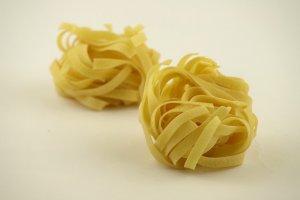What is the best Tagliatelle substitute?
Do you need a tagliatelle substitute? Tagliatelle is a classic Italian pasta known for its flat, ribbon-like shape, and can be used in a variety of dishes. If you need to find an alternative, you’re in luck because there are several great options to consider when looking for substitutes for tagliatelle. Whether you’re seeking a gluten-free alternative or just want to change things up in your recipes, here’s some delicious alternatives to this beloved pasta. Try using: Fettuccine, Pappardelle, Fusilli, Taglierini, Farfalle, Lasagne, Spaghetti, Linguine, Bucatini, Gemelli.
What is Tagliatelle?
Tagliatelle is a type of Italian pasta that’s known for its long, flat ribbons or strips. These noodles are typically made from a simple mixture of flour and eggs, which gives them a soft, tender texture and a rich flavor. Did you know that the word “tagliatelle” comes from the Italian verb “tagliare,” which means “to cut,”? So “tagliatelle” acutally refers to the process of cutting the pasta dough into wide, flat strips. Tagliatelle is most commonly associated with Bologna, where it’s often used in the classic dish “Tagliatelle al Ragù,” which is a meat-based sauce similar to what we know as Bolognese sauce. It’s a versatile pasta that pairs well with a variety of sauces, making it a favorite in Italian cuisine.
Okay, before we look at your tagliatelle substitute options, let’s deal with that empty cupboard situation!
Where can I buy Tagliatelle?
If you want to be more prepared and ensure you don’t run out of tagliatelle, then you should stock up now.
Nowadays, most delicatessens and general supermarkets stock a wide variety of tagliatelle. Or if you prefer you can also purchase tagliatelle on-line.
So why not jump on and place your order today.
STOCK UP NOW!
We thought you might like to try this black squid ink tagliatelle. Wow your guests with the stunning black color, and an authentic tagliatelle taste.
Cooks quickly. Pair with mushrooms, tomatoes, chicken or seafood.
What can I substitute for Tagliatelle?
Here are some of the best ingredients to substitute the flavor and role that tagliatelle provides in your recipes.
- Fettuccine
- Pappardelle
- Fusilli
- Taglierini
- Farfalle
- Lasagne
- Spaghetti
- Linguine
- Bucatini
- Gemelli
Tagliatelle substitutes
Fettuiccine
Fettuccine is another type of Italian pasta, and it’s often used as a substitute for tagliatelle due to its similar shape and texture. Fettuccine are actually flat ribbons of pasta. They are wider than tagliatelle but narrower than pappardelle – you don;t need to get the tape-measure out – we’ve checked! They are made with the same basic ingredients, typically durum wheat semolina and eggs, which gives fettuccine its rich and slightly chewy texture.
Using fettuccine as a substitute for tagliatelle is quite straightforward. You can use them in most recipes that call for tagliatelle, such as pasta dishes with creamy sauces, like Alfredo or carbonara, or in dishes with tomato-based sauces. The key is to match the width of fettuccine with tagliatelle, which means it will work well in recipes where the pasta plays a central role. It is excellent in dishes where you want to enjoy a hearty sauce that clings to the broad surface of the pasta.
Just cook the fettuccine according to the package instructions until they’re al dente, and then toss them with your chosen sauce and ingredients. The result will be a delightful Italian dish, which will allow you to appreciate the versatility of this pasta substitute!
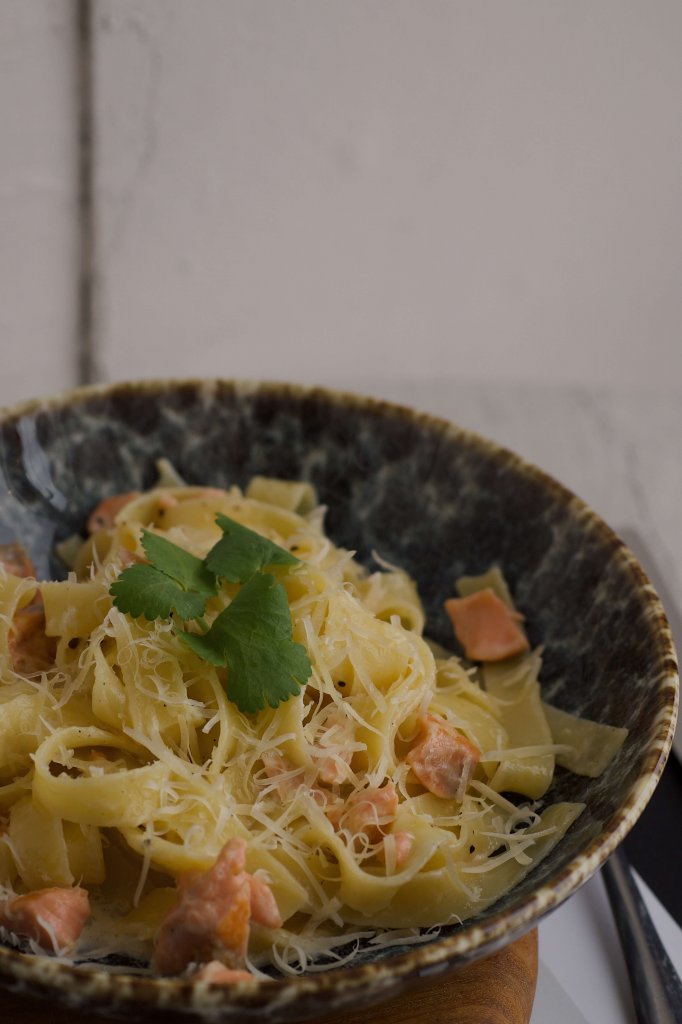
Pappardelle
Pappardelle is another fantastic Italian pasta that you can use as a substitute for tagliatelle in certain dishes. It is characterized by its wide, broad, and flat ribbons or strips, even wider than fettuccine (yes, we checked this one too!), which therefore makes it an excellent choice for heartier sauces and ingredients.
Pappardelle works best in recipes where the pasta takes center stage, similar to those that call for tagliatelle. Try using it for dishes that have a rich and robust sauce, such as a hearty Bolognese or mushroom ragout.
Follow the cooking instructions on the package to ensure the pappardelle is cooked to al dente (still has a little bit of bite), as overcooking can make the wide pasta quite mushy.
Once cooked just toss the cooked pappardelle with your chosen sauce and ingredients. The wide surface of the pasta will hold and absorb the sauce beautifully, creating a delicious, flavorful dish.
Pappardelle can bring a unique twist to your recipes, adding a rustic and substantial quality that you may find intriguing. Whether you’re making a comforting winter dish or a rustic Italian-inspired meal, pappardelle can be a delightful alternative to tagliatelle in the right context.
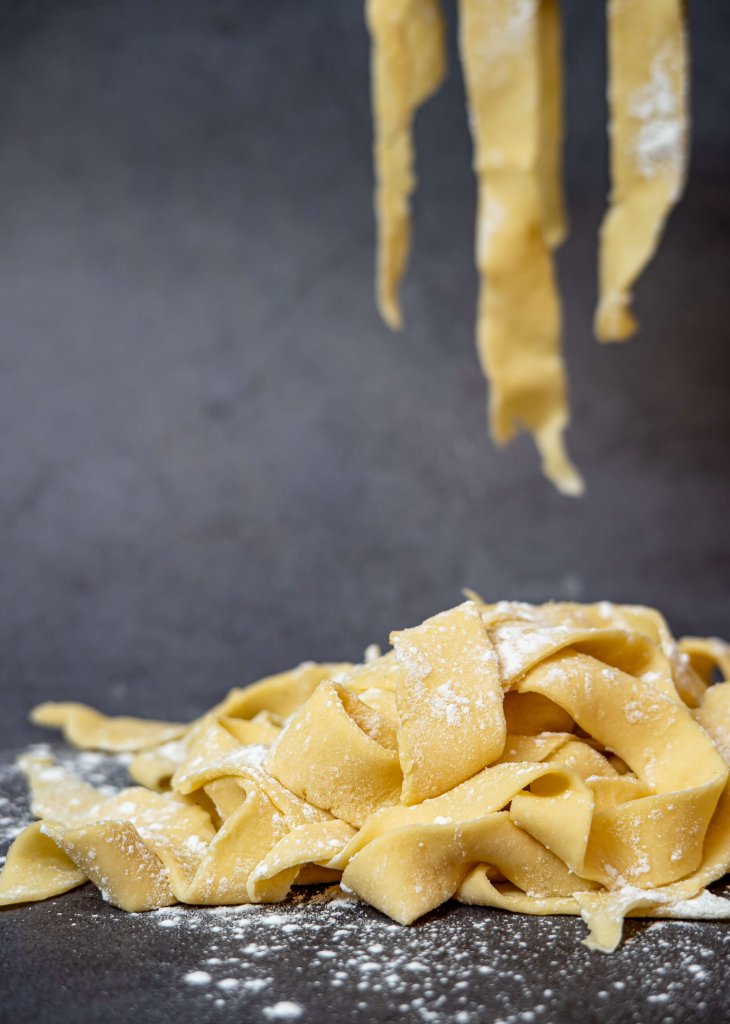
Fusilli
Fusilli is a type of Italian pasta, known for its distinctive spiral or corkscrew shape. You make it by combining durum wheat semolina or other flours and water. While it’s quite different from tagliatelle in terms of shape, fusilli can be used as a substitute in certain recipes with a few adjustments.
Fusilli is best suited for dishes that have a more playful and casual vibe. It works well in pasta salads, one-pot pasta dishes, and recipes with chunky or creamy sauces. Nowadays you can get fusilli in a range of colours, thereby adding a visual twist to your dish.
Boil the fusilli according to the package instructions until it’s al dente. Remember that fusilli’s spiraled shape can trap sauce, which enhances its flavor.
Toss the cooked fusilli with your desired sauce and ingredients. The spiral shape can hold and distribute the sauce evenly, creating a tasty and well-coated dish.
Using fusilli as a tagliatelle substitute can add a different texture and appearance to your recipes. It’s a great choice when you want to have some fun with your dishes, and hopefully you will enjoy the variation and the unique way the pasta interacts with different sauces and ingredients.
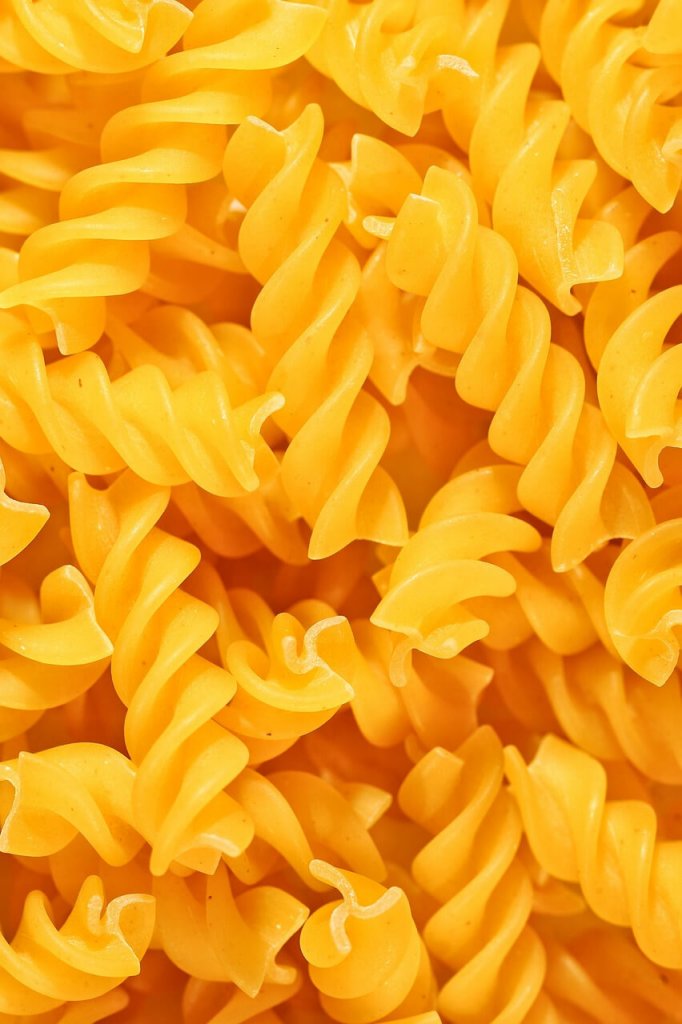
Taglierini
Not necessairly an easy pasta to find, taglierini is a type of Italian pasta that’s quite similar to tagliatelle. However, these two pasta varieties share many common characteristics, making taglierini an excellent substitute for tagliatelle in various dishes.
Taglierini is long and flat like tagliatelle but it is generally narrower, typically it is only around 2-3 millimeters wide. Combine durum wheat semolina and eggs together to create the pasta. When cooked it should have a tender yet slightly chewy texture.
Use taglierini in recipes that call for tagliatelle, particularly in dishes that match northern Italian cuisine. It pairs wonderfully with cream-based sauces, delicate seafood, or simple olive oil and herb combinations.
Try using as a substitute in recipes that traditionally use tagliatelle, especially those with creamy sauces, seafood, or light olive oil-based preparations.
Boil the taglierini in a large pot of salted water until it’s al dente, just as you would with tagliatelle. Then toss the cooked taglierini with your preferred sauce and ingredients. The narrow, flat shape of taglierini will work wonderfully to capture and enhance the flavors of the sauce.
Taglierini is a perfect option when you want a tagliatelle substitute that maintains the essence of the original dish while offering a slight variation in texture and appearance.
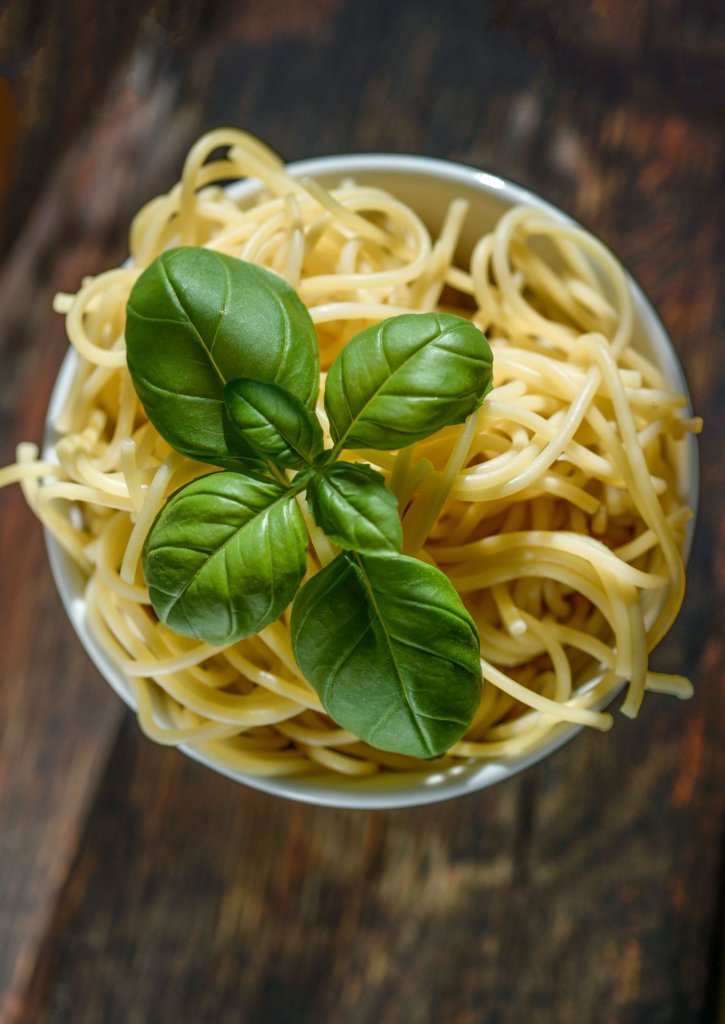
Farfalle
Farfalle, commonly known as bowtie or butterfly pasta, is a charming and distinctive type of Italian pasta. While it has a unique shape quite different from the long, flat ribbons of tagliatelle, you can use it as a substitute in specific dishes, with some modifications.
Farfalle are small, rectangular or oval pieces of pasta with a central pinched section, which gives them the appearance of bowties or butterflies.
Made from durum wheat semolina and water, farfalle has a smooth and slightly chewy texture. You can also add food colouring to give a visually stunning look to your dish, which also appeals to younger eaters.
You can use farfalle in pasta salads, in dishes that have a light cream-based sauce, or dishes that benefit from a decorative and playful pasta shape.
Try to choose recipes where the shape of the pasta is less critical, such as pasta salads or dishes with lighter sauces. Farfalle’s unique shape can add an element of fun to your recipes.
Boil the farfalle following the package instructions until they are al dente. Then toss the cooked farfalle with your chosen sauce and ingredients. Remember, farfalle can hold small amounts of sauce and ingredients in the pinched center, which makes it an enjoyable and flavorful pasta option.
While farfalle differs significantly in appearance from tagliatelle, it can still make for an appealing and unique substitute in certain recipes.
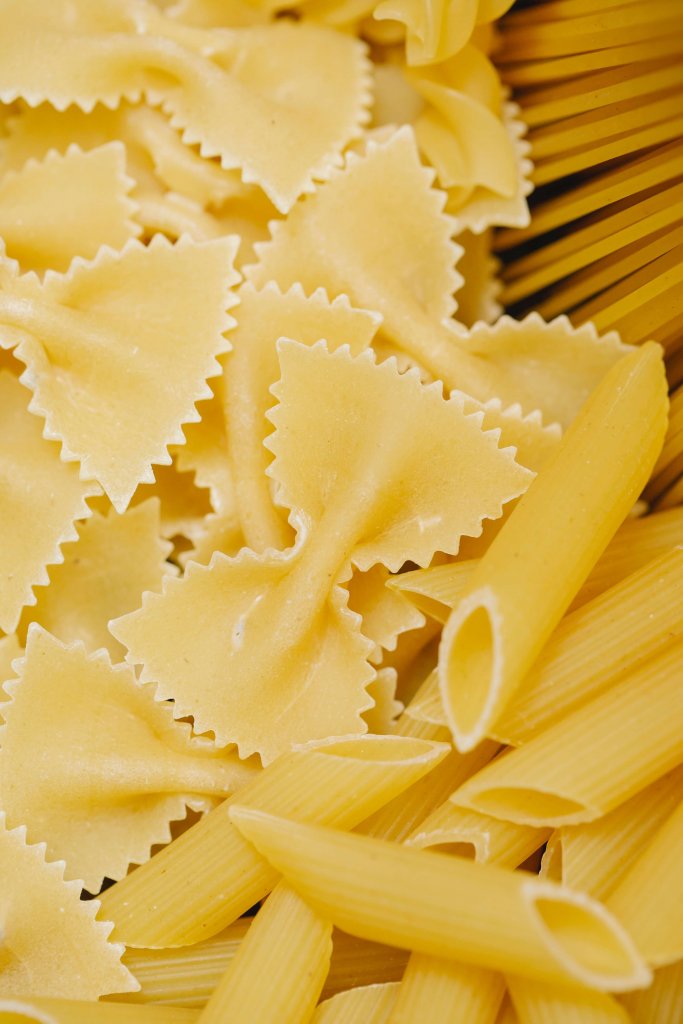
Lasagne
Lasagne is a popular Italian pasta, but it’s different from tagliatelle in several ways. It is known for its wide, flat sheets, and it’s often used to make the classic Italian dish, lasagna. While it may not be a direct replacement for tagliatelle, you can use lasagne sheets creatively in certain dishes.
Lasagne is typically sold in large, flat rectangular sheets, often layered to create the famous lasagna dish.
It’s made from durum wheat semolina and water, resulting in a hearty and slightly chewy texture. Nowadays you can get lasgane in fresh or pre-cooked sheets.
Lasagne is most famous for layering with sauces, cheese, and other ingredients to create the classic lasagna dish. However, you can also use individual sheets in other baked pasta dishes.
Try to choose recipes that can accommodate the rectangular shape of lasagne sheets. You can layer them in baked pasta dishes, such as a lasagna or a cannelloni recipe.
Before using lasagne sheets, you’ll need to precook them according to the package instructions until they’re partially cooked (al dente), as they’ll continue cooking in the oven.
Layer the partially cooked lasagne sheets with your desired fillings, sauces, and cheese in a baking dish. Bake until the lasagne is fully cooked and the top is golden and bubbly.
If you are using fresh lasagne sheets, you could consider cutting them into strips to try to replicate tagliatelle.
Using lasagne sheets as a substitute for tagliatelle is a creative approach, especially when you want to make a baked pasta dish with layers of ingredients. It will bring a slightly different texture and presentation to your recipes.
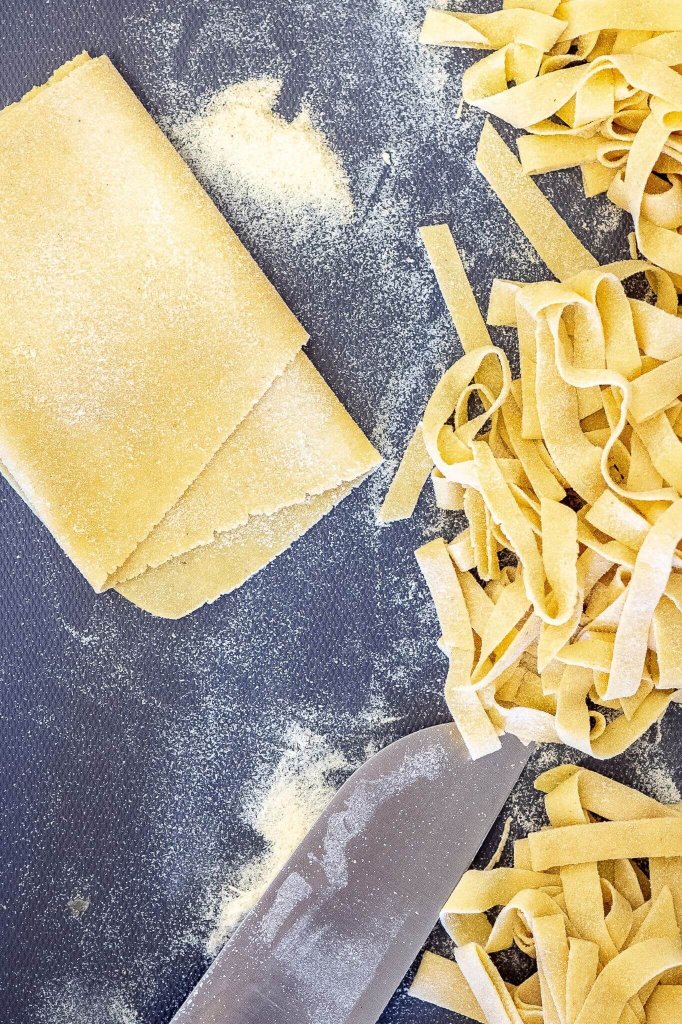
Spaghetti as a tagliatelle substitute
One of the most well-known pastas, spaghetti, is widely enjoyed in most types of Italian pasta dishes. It does differ significantly from tagliatelle in terms of its shape, however, it can be creatively used as a substitute in certain recipes when you’re open to experimenting.
Spaghetti is a long, thin, cylindrical pasta. Its slender shape makes it distinct from the flat ribbons of tagliatelle.
You make spaghetti by combining durum wheat semolina and water, which offers a smooth and slightly firm texture.
You can pair spaghetti with a variety of sauces, including tomato-based, olive oil-based, and creamy options. Choose recipes where you aren’t too bothered about the pasta shape. It can work well in dishes with traditional tomato-based sauces or lighter olive oil and herb-based recipes.
Boil the spaghetti in a large pot of salted water until it reaches the desired level of doneness, typically al dente. Then toss the cooked spaghetti with your chosen sauce and ingredients. The cylindrical shape of spaghetti can be a unique twist that adds a different texture and appearance to your dish.
While spaghetti’s shape is distinctly different from tagliatelle, it can add an element of surprise and variation to your recipes. Try and enjoy getting creative by using spaghetti as a substitute in specific dishes.
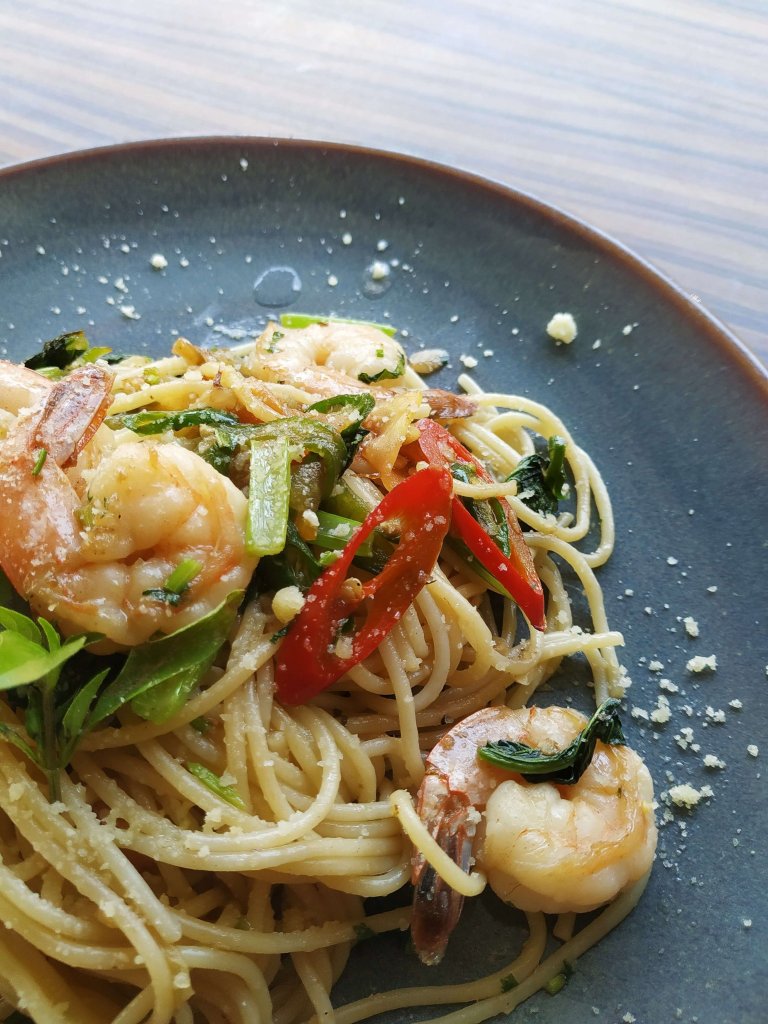
Linguine as a tagliatelle substitute
Linguine is another type of Italian pasta that can serve as a suitable substitute for tagliatelle in certain recipes. It has a long, flat, and narrow shape, which sets it apart from the broader ribbons of tagliatelle. Its name actually means “little tongues” in Italian, referring to its shape.
You make linguine by combining durum wheat semolina and water, providing a tender yet slightly chewy texture.
You can use it in recipes with a focus on seafood, as its flat shape allows it to hold and complement delicate seafood sauces, especially in dishes like Linguine alle Vongole (with clams) or seafood scampi.
Try to choose recipes that work well with linguine’s shape, especially those that feature seafood-based or lighter olive oil and herb-based sauces.
Boil the linguine according to the package instructions until it reaches the desired level of cooking, typically al dente. Once cooked toss the linguine with your selected sauce and ingredients. And remember, linguine’s narrow, flat shape is excellent for capturing and enhancing the flavors of your chosen sauce.
Linguine can be a delightful alternative to tagliatelle in recipes that focus on seafood or lighter, oil-based sauces. The variation in the pasta shape and texture, can bring a fresh twist to familiar dishes.
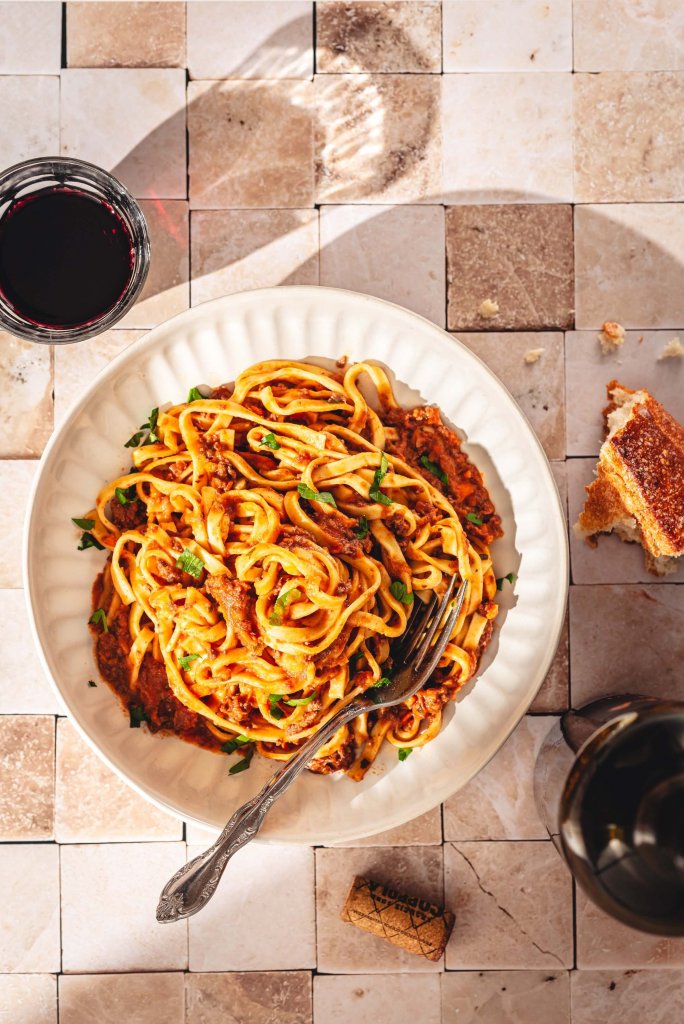
Bucatini as a tagliatelle substitute
Bucatini is a unique and distinctive type of Italian pasta that you can use as an interesting substitute for tagliatelle. This is because bucatini is actually a thick, long pasta similar to spaghetti but it has a hollow center, so it resembles a long tube (spaghetti with a hole).
You make bucatini by typically combining durum wheat semolina and water, which results in a slightly chewy texture.
Use bucatini in traditional Italian recipes, such as Bucatini all’Amatriciana, which pairs it with tomato-based sauces, pancetta, and Pecorino cheese. It’s also great with creamy sauces and can hold chunky ingredients.
Opt for recipes that can accommodate the unique shape of bucatini, particularly those featuring rich and hearty sauces or dishes with chunky ingredients.
Boil the bucatini in a large pot of salted water following the package instructions until it’s al dente. Then simply toss the cooked bucatini with your preferred sauce and ingredients. The hollow center of bucatini allows it to capture and hold the sauce, creating a flavorful and satisfying dish.
Bucatini can bring an interesting twist to your recipes, especially those that feature robust and savory sauces. Its unique shape and texture can be a welcome change offering a memorable dining experience.
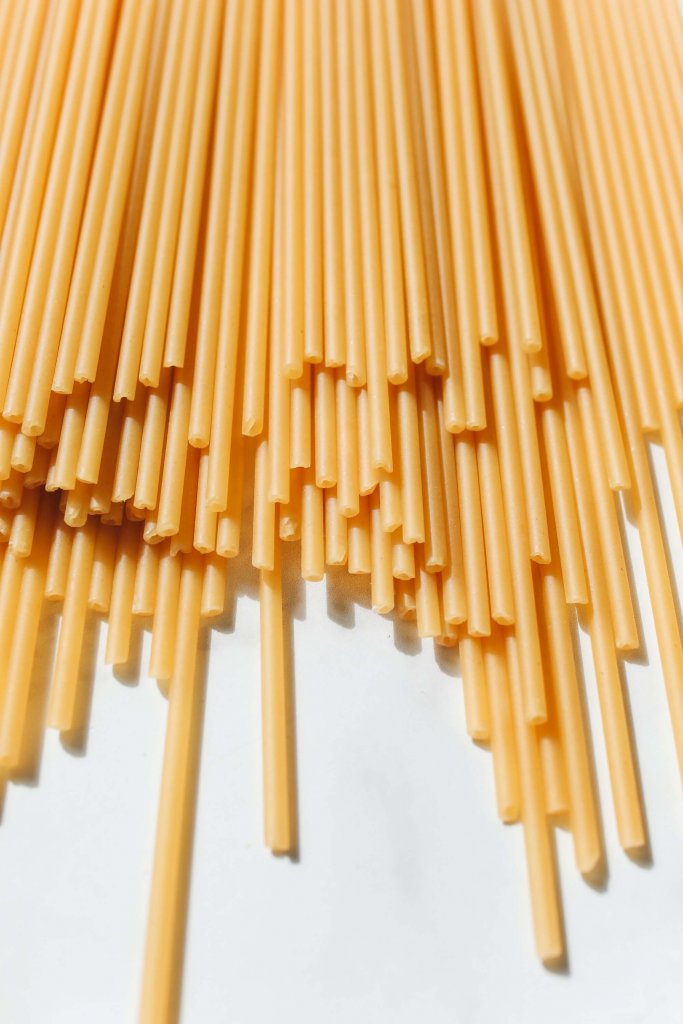
Gemellias a tagliatelle substitute
Gemelli is a delightful type of Italian pasta that can serve as a creative substitute for tagliatelle in certain dishes. It may be slightly harder to find in the supermarkets, but well worth a purchase if you see it.
Gemelli is a unique pasta variety with a twisted, spiral shape. To achieve the tight, helical shape, you need twist two strands of pasta around each other. You can actually describe it as resembling two pieces of rope that are intertwined.
You make gemelli by combining durum wheat semolina and water. This pasta offers a slightly chewy texture.
Gemelli’s distinctive shape and texture make it a versatile pasta that pairs well with a wide range of sauces, including both creamy and tomato-based options. Use gemelli pasta in pasta salads and dishes with flavorful, chunky ingredients.
Try using it in recipes that that can accommodate its unique shape. It works well in a variety of dishes, including those with creamy sauces, pesto, or dishes featuring vegetables and herbs.
Boil the gemelli in a large pot of salted water as per the package instructions. Make sure not to overcook it, typically it should be al dente. Then toss the cooked gemelli with your chosen sauce and ingredients. Gemelli’s spiral shape can help capture and distribute the sauce evenly, creating a delicious and visually appealing dish.
Gemelli’s distinctive appearance can add an element of surprise and interest to your recipes. It’s a versatile pasta that can bring a fresh twist to familiar dishes.
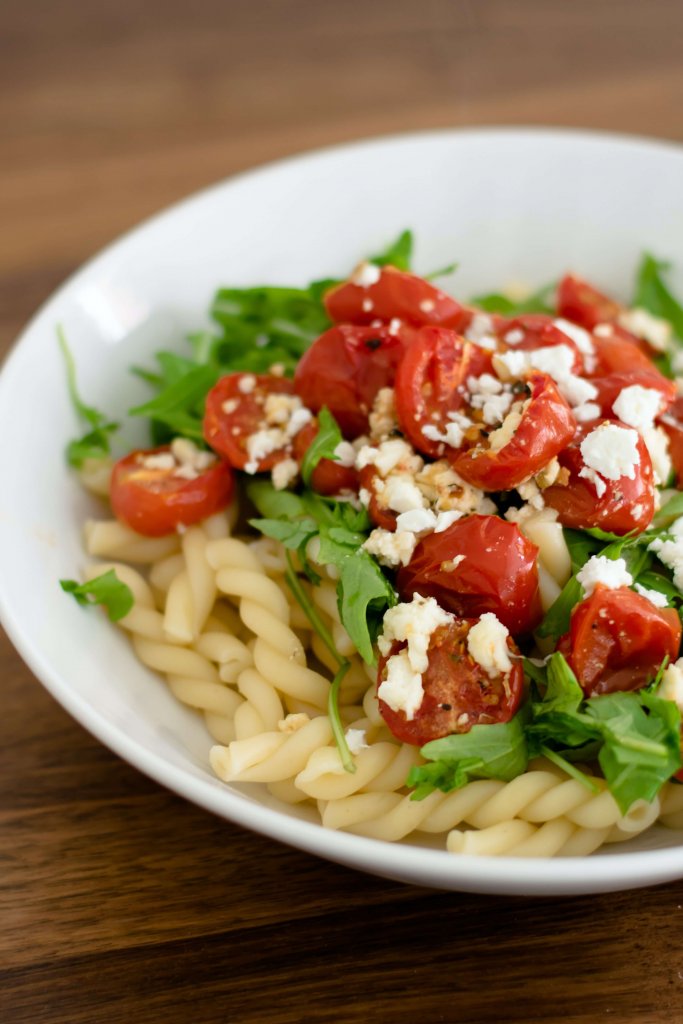
Summary for Tagliatelle substitutes
Okay – that’s you all sorted with suitable substitutes for tagliatelle.
Have you found something to whet your appetite? Here’s a quick summary of the various pasta types discussed. Let’s see again how you can use these ingredients as a substitute for tagliatelle in your recipes:
Summary
- Fettuccine: Use it as a substitute for tagliatelle when you want a broader, flat pasta for dishes with creamy or rich sauces. Think of dishes such as Alfredo or carbonara.
- Pappardelle: Ideal for heartier dishes, pappardelle’s wide, flat ribbons are great in recipes with meaty or mushroom-based sauces, offering a rustic twist.
- Fusilli: When seeking a playful and versatile alternative, fusilli works well in pasta salads or dishes with chunky and creamy sauces, adding a unique texture.
- Taglierini: Taglierini is a close match to tagliatelle, making it suitable for traditional Italian dishes, particularly those with seafood or lighter sauces.
- Farfalle: Farfalle, or bowtie pasta, is perfect for dishes where aesthetics matter, like pasta salads or recipes with lighter sauces, offering a fun twist.
- Lasagne: While different in shape, you can use lasagne sheets in layered, baked pasta dishes when you’re looking for a change in presentation and texture.
- Spaghetti: Use spaghetti creatively in recipes with versatile sauce options, such as traditional tomato-based or lighter olive oil-based sauces, adding a different look and feel.
- Linguine: Its narrow, flat shape pairs well with seafood-based or olive oil and herb-based sauces, offering a unique texture to your dishes.
- Bucatini: Bucatini, with its hollow center, is ideal for recipes with rich and hearty sauces or dishes featuring chunky ingredients.
- Gemelli: Gemelli’s twisted, spiral shape makes it a creative substitute for tagliatelle in various recipes, allowing for a playful and versatile twist.
Each of these pasta types can add a unique texture and appearance to your dish. They are also excellent alternatives to tagliatelle, depending on your recipe and the flavor profile you wish to achieve.
We have gathered together a lot more facts on ingredients such as herbs, spices, oils, nuts, etc. if you would like to learn some more.
Or if you need to swap out another ingredient have a look at our Substitutes section.
